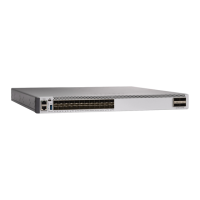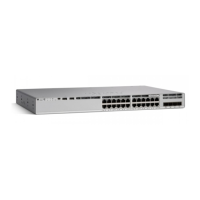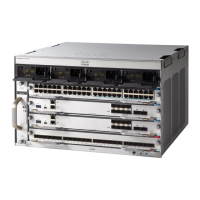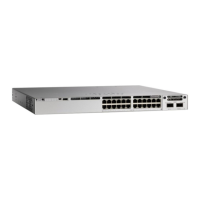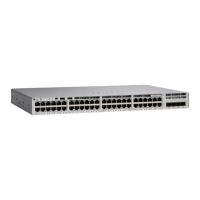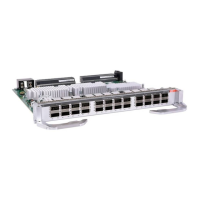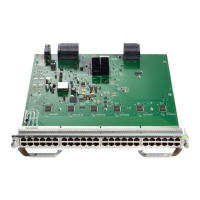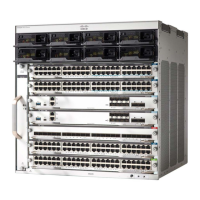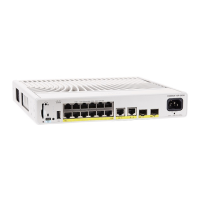ID, even if other interfaces have higher IP addresses. Because loopback interfaces never fail, this provides
greater stability. OSPF automatically prefers a loopback interface over other interfaces, and it chooses the
highest IP address among all loopback interfaces.
How to Configure OSPF
Default OSPF Configuration
Table 9: Default OSPF Configuration
Default SettingFeature
Cost:
Retransmit interval: 5 seconds.
Transmit delay: 1 second.
Priority: 1.
Hello interval: 10 seconds.
Dead interval: 4 times the hello interval.
No authentication.
No password specified.
MD5 authentication disabled.
Interface parameters
Authentication type: 0 (no authentication).
Default cost: 1.
Range: Disabled.
Stub: No stub area defined.
NSSA: No NSSA area defined.
Area
100 Mb/s.Auto cost
Disabled. When enabled, the default metric setting is 10, and the external
route type default is Type 2.
Default-information originate
Built-in, automatic metric translation, as appropriate for each routing
protocol.
Default metric
dist1 (all routes within an area): 110. dist2 (all routes from one area to
another): 110. and dist3 (routes from other routing domains): 110.
Distance OSPF
Disabled. All outgoing link-state advertisements (LSAs) are flooded to the
interface.
OSPF database filter
Disabled.IP OSPF name lookup
Routing Configuration Guide, Cisco IOS XE Everest 16.6.x (Catalyst 9500 Switches)
92
Configuring IP Unicast Routing
How to Configure OSPF
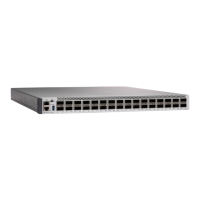
